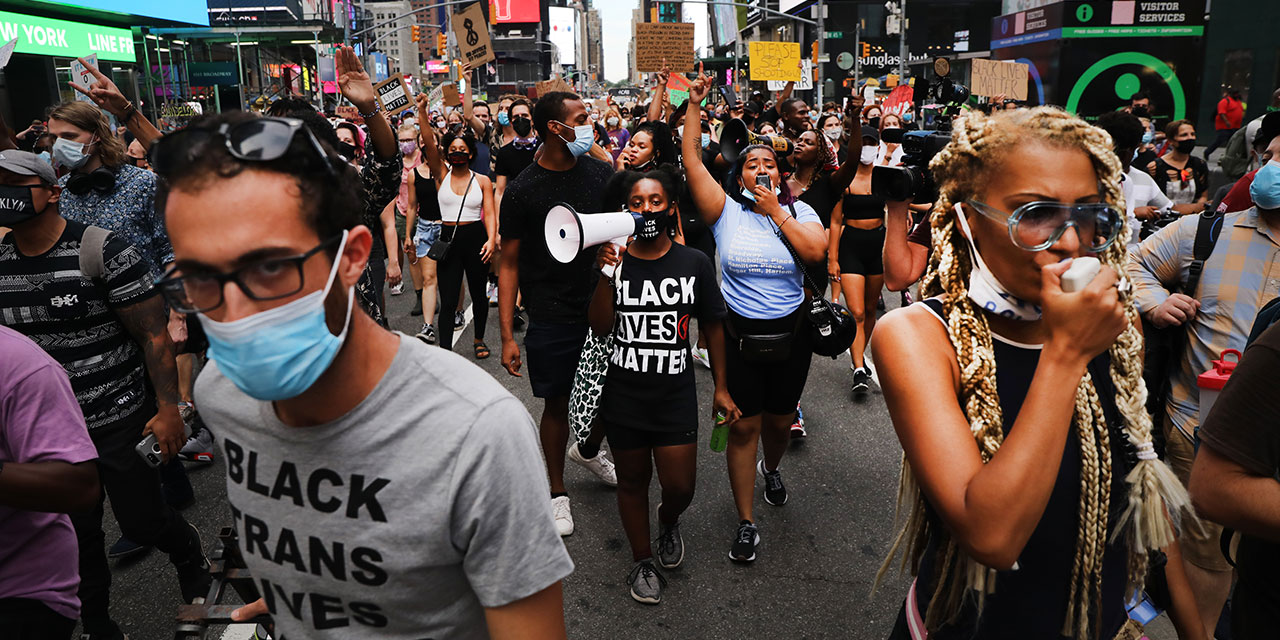By: Dan Lennington – nationalreview.com – March 24, 2024
Whom is DEI supposed to help and why? This shouldn’t be a trick question, but those responsible for pushing “diversity, equity, and inclusion” haven’t thought much about the answer. And, as it turns out, this may be a fatal legal flaw for DEI programs nationwide.
Since 2020, DEI-inspired programs have exploded. Policy-makers have redistributed billions to minorities in the name of “equity”; schools have launched race-based discipline policies, academic reforms, and scholarships; and woke corporations have spent billions in grants, loans, contracts, and even jobs reserved for members of minorities. These policies rely on one central dogma: Racial minorities are all “disadvantaged,” “marginalized,” or “underrepresented,” and, through special treatment and preferences, historical wrongs can be righted.
But that’s a pesky term, “minority,” and it’s starting to cause legal problems for the purveyors of DEI.
The work of defining “minority” raises more questions than answers. Since the 1970s, the United States government has identified four minority categories: “Asian,” “American Indian,” “African American/Black,” and “Hispanic.” DEI programs have largely followed suit and, for the most part, still use these antiquated racial categories. But in the world of racial taxonomy, for example, Asians are apparently not people who come from Asia. The Middle East, while obviously in Asia, is almost never considered part of Asia under DEI’s racial calculus. And northern Asia, from Afghanistan to Mongolia, is similarly not “Asian” enough to be included.
What about “Hispanic”? That term only applies to individuals from Spanish-speaking countries, so individuals from Brazil, Belize, and Guyana are left out. To fix this, DEI programs sometimes use the term “Latino,” yet not all individuals from Central America, South America, or the Caribbean countries embrace that Eurocentric term.
Even the term “African American” is a misnomer: Individuals from North Africa — from Egypt to Morocco — are never considered African American and, in fact, are labeled “white” by the federal government.
As far as Native Americans are concerned, the government and DEI-program administrators have struggled, sometimes adding (and sometimes ignoring) Native Hawaiians, Native Alaskans, and the broad and clumsy term “Pacific Islanders” (which, according to the federal government, includes individuals from some parts of Indonesia but not others). At bottom, all these categories are arbitrary at best and bigoted at worst.
Courts have started to take notice. In striking down racial preferences in the federal Restaurant Revitalization Fund, Sixth Circuit judge Amul Thapar criticized the program’s racial line-drawing as “scattershot,” writing: “Individuals who trace their ancestry to Pakistan and India qualify for special treatment. But those from Afghanistan, Iran, and Iraq do not. Those from China, Japan, and Hong Kong all qualify. But those from Tunisia, Libya, and Morocco do not.” Another federal judge struck down the Small Business Administration’s race-based contracting program in part because it relied on “arbitrary line drawing” by excluding “Central Asian Americans” and “Arab Americans.” And just this month, Texas federal judge Mark Pittman ordered the Minority Business Development Agency to stop discriminating based on race, noting that the Biden administration was “unable to offer any rubric used for these determinations” of who is in and who is out of the agency’s racial categories.
This racial-line-drawing controversy has even reached the U.S. Supreme Court. Last summer, in striking down affirmative action, the Court calledthe universities’ racial categories “imprecise” and “overbroad.” The Court wrote, “By grouping together all Asian students, for instance, respondents are apparently uninterested in whether South Asian or East Asian students are adequately represented.” Other racial categories, such as “Hispanic,” the Court called “arbitrary or undefined.” Moreover, the Court noted that some races, such as Arabs, Persians, Kurds, and Turks, were left out altogether. The Court was befuddled that attorneys defending affirmative action could not answer this simple question: “How are applicants from Middle Eastern countries classified, such as Jordan, Iraq, Iran, and Egypt?”
These inadequacies are critical because, under federal law, all race-based programs must be “narrowly tailored.” This means that a DEI program must precisely target the harm it purports to cure. DEI-policy-makers and program administrators must explain why they are helping some racial groups rather than others. Attorneys of victims of DEI should recognize this straightforward and relatively cost-effective method of challenging the doctrine: Attacking the arbitrary and ill-defined racial categories, thereby forcing defendants to explain whom they are helping and why. This is a legal burden that defendants in such cases must bear — and so far, they’ve failed. None has adequately justified the typical racial categories, and no judge has ever found them sufficiently precise.
Even woke advocates have recognized this vulnerability. Nikole Hannah-Jones, the author of the widely refuted 1619 Project, recently wrote in the New York Times Magazine, “Race-based affirmative action has died.” She argued that future DEI programs should serve only the “descendants of slavery,” rather than all minorities, because they are the victims of racial discrimination. She is half-right. DEI programs, if they exist at all, should focus on assisting only those individuals who need help. But “descendants of slavery” is far too broad a description. As Judge Pittman noted in his recent decision, for example, someone like Oprah Winfrey should not be considered “presumptively disadvantaged.” It’s time to stop assuming that individuals are disadvantaged merely because of their race.
Broad social programs can and should exist, but the current DEI programs must be rejected. Federal law demands the color-blind treatment of all individuals. Getting diversity and inclusion right will require an abandonment of all stereotypes and a focus on individual need and merit.
Proponents of DEI can either reform their (sometimes) well-intentioned programs or learn a hard lesson in court.
To see this article in its entirety and to subscribe to others like it, please choose to read more.
 Listen Online
Listen Online Watch Online
Watch Online Find a Station in Your Area
Find a Station in Your Area









 Listen Now
Listen Now Watch Online
Watch Online
